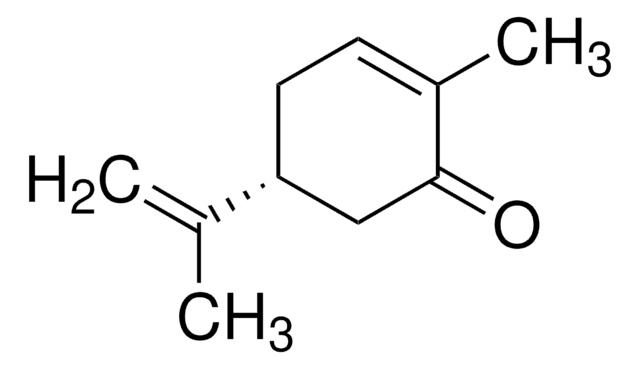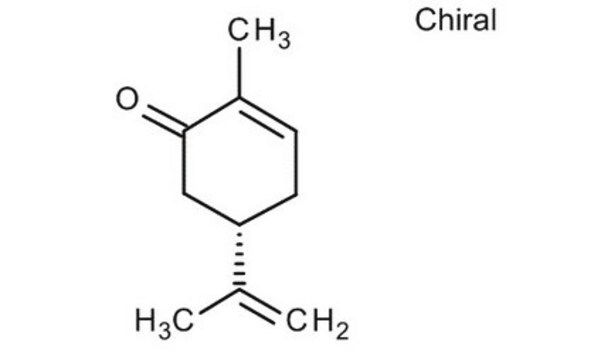435759
(S)-(+)-Carvone
96%
Synonym(s):
(+)-Carvone, (S)-5-Isopropenyl-2-methyl-2-cyclohexenone, p-Mentha-6,8-dien-2-one
About This Item
Recommended Products
Assay
96%
form
liquid
optical activity
[α]23/D +55.0±7°, neat
refractive index
n20/D 1.497 (lit.)
bp
96-98 °C/10 mmHg (lit.)
density
0.96 g/mL at 25 °C (lit.)
SMILES string
CC(=C)[C@H]1CC=C(C)C(=O)C1
InChI
1S/C10H14O/c1-7(2)9-5-4-8(3)10(11)6-9/h4,9H,1,5-6H2,2-3H3/t9-/m0/s1
InChI key
ULDHMXUKGWMISQ-VIFPVBQESA-N
Looking for similar products? Visit Product Comparison Guide
General description
Application
- (-)-Samaderine Y, a pentacyclic quassinoid.
- (-)-Ambrox, a terpenoid responsible for the odor of ambergris.
- 3β-Acetoxydrimenin (a sesquiterpene) via conjugated addition of potassium cyanide followed by base catalyzed Robinson annulation reaction.
- Thapsigargin family members such as trilobolide, nortrilobolide, and thapsivillosin F.
Packaging
Signal Word
Warning
Hazard Statements
Precautionary Statements
Hazard Classifications
Skin Sens. 1A
Storage Class Code
10 - Combustible liquids
WGK
WGK 1
Flash Point(F)
204.1 °F - closed cup
Flash Point(C)
95.6 °C - closed cup
Personal Protective Equipment
Certificates of Analysis (COA)
Search for Certificates of Analysis (COA) by entering the products Lot/Batch Number. Lot and Batch Numbers can be found on a product’s label following the words ‘Lot’ or ‘Batch’.
Already Own This Product?
Find documentation for the products that you have recently purchased in the Document Library.
Customers Also Viewed
Our team of scientists has experience in all areas of research including Life Science, Material Science, Chemical Synthesis, Chromatography, Analytical and many others.
Contact Technical Service









